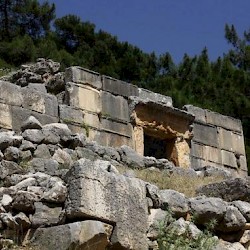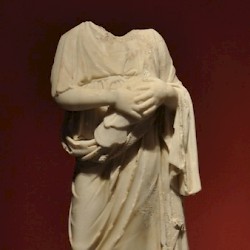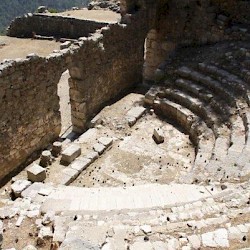Arykanda
Q718048Arykanda: ancient Lycian town (modern Aykiriçay).
Early History
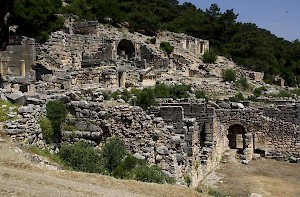
Arykanda is an ancient city built on five terraces in a mountain slope, some 1000 meters above sea level. The anda-ending of its name suggests an origin in the Anatolian Bronze Age, which makes Arykanda one of the oldest Lycian cities. However, the ruins are from a later period: from the sixth or fifth century BCE to the third century AD.
Like other Lycian cities, Arykanda was under Persian rule in the fifth century BCE. Alexander the Great assumed control in 333 BCE. From this age is the wide, flat agora from the fourth century BC, which was enclosed on three sides with a portico. In the center of this square was a temple dedicated to Tyche. On a higher terrace was a temple dedicated to Helios. Not far from it, if one were to walk down to the bouleuterion on a lower terrace, were a bathhouse and a fountain, which obtained water from a nearby spring and channeled it to two large cisterns.
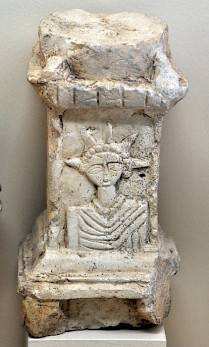
After Alexander's death, the city was ruled by - successively - the Ptolemies, the Seleucids, and Rhodes. Later, the city was a member of the Lycian League, issuing its own coins, and it became part of the Roman zone of influence. From this age are the second- or first-century BCE theatre, with twenty rows of seats, hewn into the hillside. It was connected to the bouleuterion (also with seats cut out of the slope of the mountain) by a long stoa. A bit younger is the half-size Hellenistic stadium, which dates to the first century BCE Hellenistic stadium. Measuring just some 100 meters, it has only seats on the north side cut, into the mountainside.
Roman Age
The emperor Claudius imposed direct Roman rule in 43 AD. Several monuments date back to this age. The temple for the imperial cult, the Sebasteion, was built during the reign of Trajan (r.98-117). In the odeon, once decorated with colored marble and floor mosaics, a statue of the emperor Hadrian (r.117-138) was found, flanked by masks of deities. Like many other finds from Arykanda, it is now in the Archaeological Museum of Antalya.
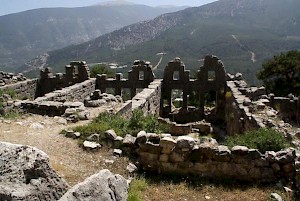
A bit younger - built after an earthquake in 141 - is the largely intact bath complex, supported with arches, converted into a bath-gymnasium and later refurbished.
There were tombs along the street above the eastern bath complex. Here were impressive barrel-vaulted monumental tombs, temple tombs, and sarcophagi. One temple tomb on a podium contains an inscription and a Corinthian façade decorated with a lion relief. Another displays winged figures on either side of a bust over the lintel.
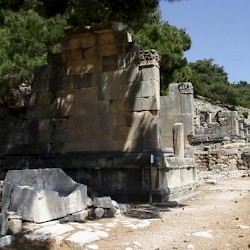 Arykanda, Necropolis, Tombs |
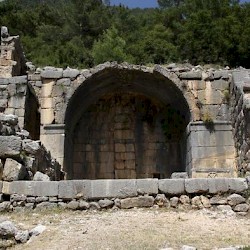 Arykanda, Necropolis, Large tomb |
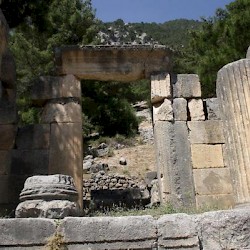 Arykanda, Necropolis, Large tomb, Entrance |
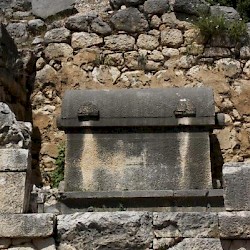 Arykanda, Necropolis, Sarcophagus |
Late Antiquity
Christianity arrived as early as the third century. An inscription records the text of an anti-Christian petition whichthe Arykandians sent to the emperor Maximinus Daia in 312.note After the breakthrough of Christianity, in the fifth century, the Sebasteion was reused as a basilica church and bishop’s palace. Traces of wall paintings and floor mosaics are still visible.

Arykanda survived through late Roman times, until the inhabitants in the sixth century moved to Arif, a separate site to the south of the ancient town. The name "Arykanda" remained in use, though: a deacon named Peter attended the Second Council of Nicaea in 787.
Getting there
From Kumluca a good road leads to Elmali. The site of Arykanda is well-signposted near the village of Aykiriçai. One can park the car on the foot of the site.
